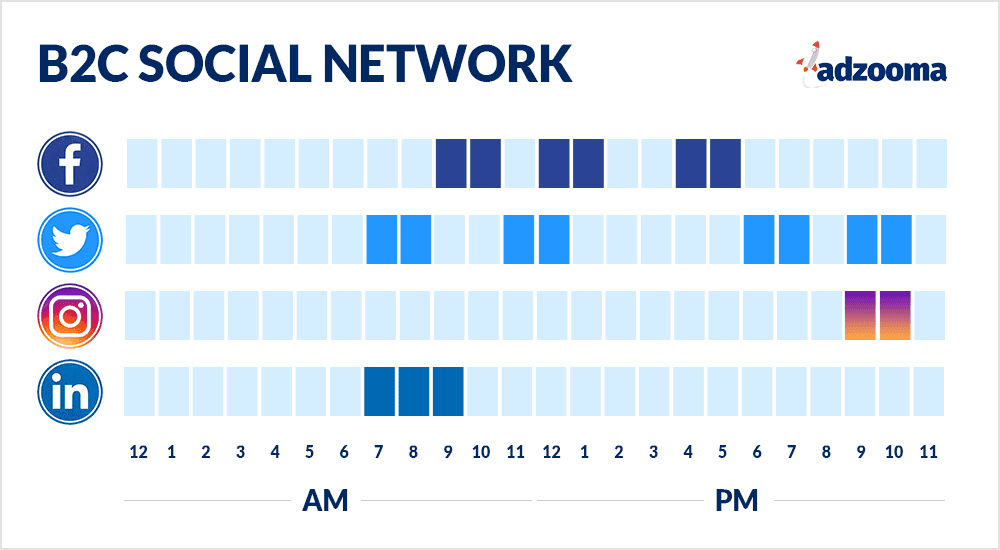If your business is online, you’ll need a workable social media strategy.
Tweeting aimlessly and posting unplanned Facebook posts won’t offer anything useful to your customers. There needs to be thought, consistent effort, and continual analysis and adaptation in order to get the best results and make those all-important conversions.
But you might already have a strategy and it doesn’t seem to be working. Whether you’re a beginner, intermediate, or an advanced user, this guide will help you create a stellar social media plan.
What is a social media strategy?
A social media strategy is a plan of everything you want to do and achieve on social media, linked with your business goals. It will give you a detailed roadmap that determines:
- What content you will use
- What social media platforms it will feature on
- When you will share it
- How you will measure success.
- Who your audience(s) will be
- What their concerns and challenges might be
- How you can help them in your social media marketing.
A social media strategy is not a static document, but should be constantly evolving and adapting to meet different offers, changing audience demands and wider market conditions.
So, how do you go about putting together a social media strategy that works for your business? Here are 9 easy tips to help you.
1. Set your goals
How you approach your social media depends largely on what you want to gain out of it. The first step is to develop some goals you hope to achieve and effective social media metrics that can guide your activity (more on those in Step 3).
Examples of good social media marketing goals would be things like:
- Achieving a certain number of email sign-ups through Facebook
- Reaching a target CPA (cost-per-acquisition)
- Generating brand awareness on Twitter
These goals should relate to the objectives and KPIs in your business plan. You should also consider whether you’ll use paid or organic channels to achieve these goals. Both come with their advantages and disadvantages and we’ve written a guide to paid and organic social media to give this some more thought.
2. Find your target audience
Understanding your audience and what they need is fundamental to your success with social media marketing. You should never assume when it comes to the needs and wants of your audience. Luckily, there is a whole load of tools for social media analysis, and demographic data available to you to help you make informed decisions. No one platform suits every type of audience, so you must use the information available to help you target your content and spend.
A good way to do this is by creating customer personas. This will help you tailor your content and optimise your activities and strategy.
Think about the following demographics:
- Age
- Gender
- Location
- Income
- Interests
- Marital status
- Employment status
By aligning your product or service with different customer personas, you can plan out what content will resonate with those audiences and hit your targets.
3. Measure the most important metrics
Ever heard of vanity metrics?
They measure things like follower counts, page views, and subscribers. They’re called vanity metrics because they look good on paper but don’t tell a great deal about performance. A Facebook page with 100,000 fans might not get as much engagement as a page with 1,000 fans. You might get a lot of page views but your bounce rate might be very high, meaning they’re viewing the page and leaving without navigating to any other page on your site.
The only marketing that truly delivers is data-driven – so disregard those vanity metrics and dig deep. Ask yourself: what metrics are the most important measures of success to you? Some good examples of useful metrics are:
- Engagement rate – Facebook Insights can tell you which posts have the most engagement, including comments and shares. The same can be measured on Instagram with tools like Phlanx.
- Reach – look at a combination of your current audience growth and campaign reach to estimate a monthly average to strive for
- Bounce rate – Bounce rate is a web analytics metric and social media plays a role in that as you try to get social referral traffic. The average bounce rate from social traffic is around 54%, according to CXL but that can vary depending on the industry.

4. Choose the right social media platforms for you
If you know exactly who your audience are, then it’s far easier to determine the best approach.
According to a 5WPR report [PDF], millennials’ (defined as 18-34 year olds) daily use of Facebook is 77%, compared to 68% usage by 35-to-54 year olds and 52% of the 55-plus age group (aka “boomers”). If you target B2B customers then LinkedIn is generally a good port of call. Understand where your audience is having conversations about you or your industry and aim to be there contributing to the discussion.
5. Consider your tone for each
You may have to adapt your approach across several platforms. It’s not to say that you cannot use the same content across several social platforms, but you will need to adapt it for each – for example, asking more questions or doing a poll on Twitter, expanding the same subject into a blog post or a white paper for LinkedIn, and taking an image-led angle on the topic for Pinterest or Instagram.
You may think about creating a brand tone of voice document so that anyone who posts on Facebook or Twitter or Instagram knows what sort of tone and language they can use to keep things consistent.
6. Decide when and how you will post
Using a social dashboard can help you to keep all of your posts in check, but having some thought behind when and how you post your content will always pay off. You should know the best posting times for your audience and channel by analyzing the reach and engagement of your historic posts. Remember that you can prepare posts in advance according to a content calendar and use social media scheduling tools like Crowdfire and POSTOPLAN to push them out at the optimal times.

7. Research your competitors
Effective competitor analysis is the cornerstone of a good marketing plan, but if you haven’t been including your competitors’ social media channels in this, it’s time to start. Again, there are tools out there which can help you analyze what they are doing and gain insight (Sprout Social, Phlanx, Brandwatch, Buzzsumo). Don’t directly copy their content ideas, but you can look at what is working for them to work out what is likely to be popular for you to try.
8. Start organic, then try paid
The beauty of social media marketing is that there are different levels to it. If you build well-targeted, quality content that is shared appropriately, you should find some success just with organic, or non-paid for activity. Once you have enough of a track record to understand what is working well, you can boost this with some paid ads to gain you a share of the market.
9. Test, test, and test some more
It’s a good idea to test everything to understand exactly why it works or doesn’t work. You can use A/B or “split” testing to make minor tweaks with content and post and understand what works well. Over time, you can draw this information out into wider audience trends to inform your strategy.
Evaluate your work at least once a month to spot what changes there are, and consider using a social media dashboard to help draw out the information.
Conclusion
Your social media strategy guides the direction and purpose of everything you do on your social channels. The right one can entirely change the fortunes of your company, with minimal investment of advertising budgets required. Spending a little more time developing this strong foundation, and you could be on track for big improvements to your sales pipeline.




